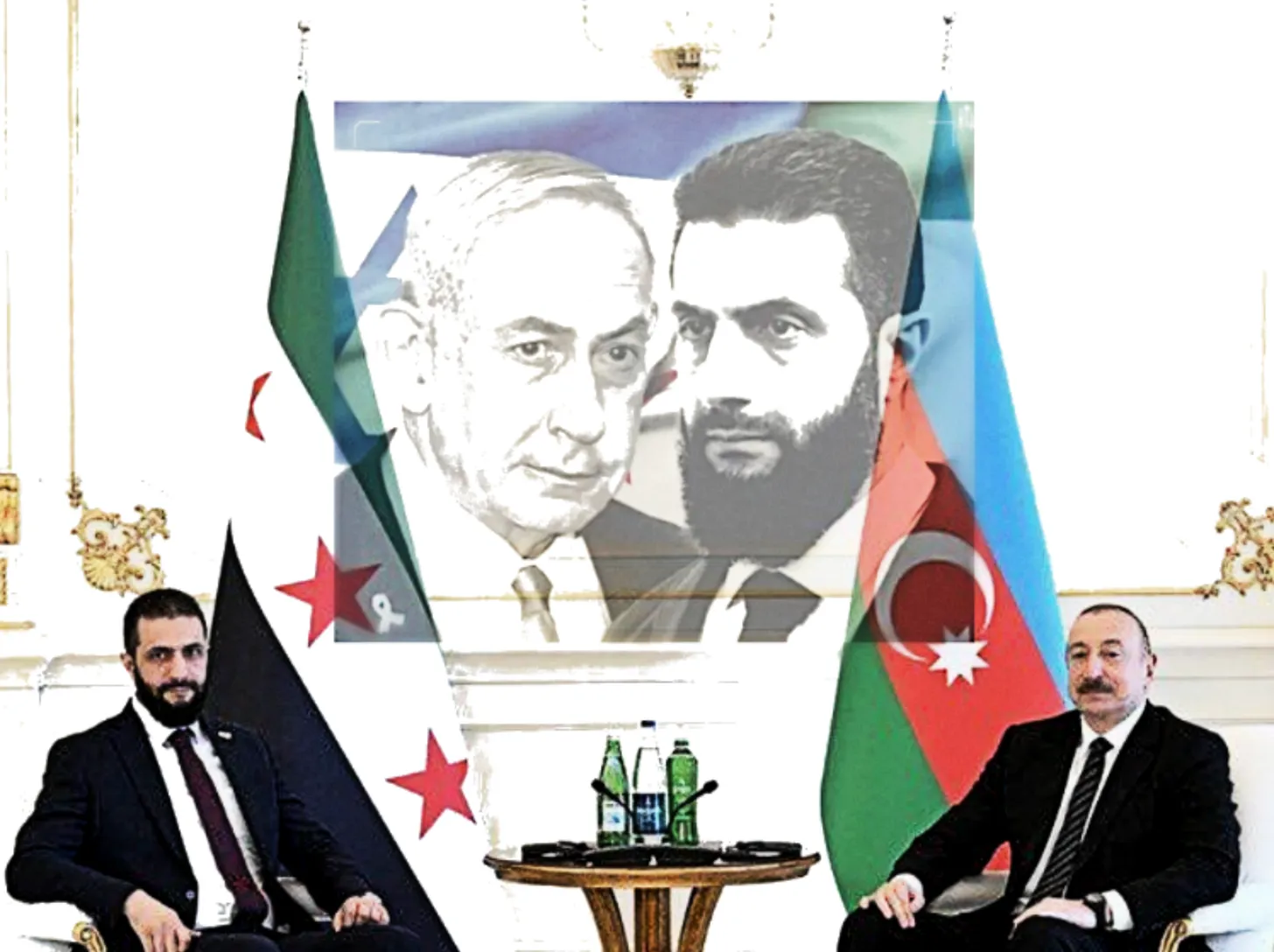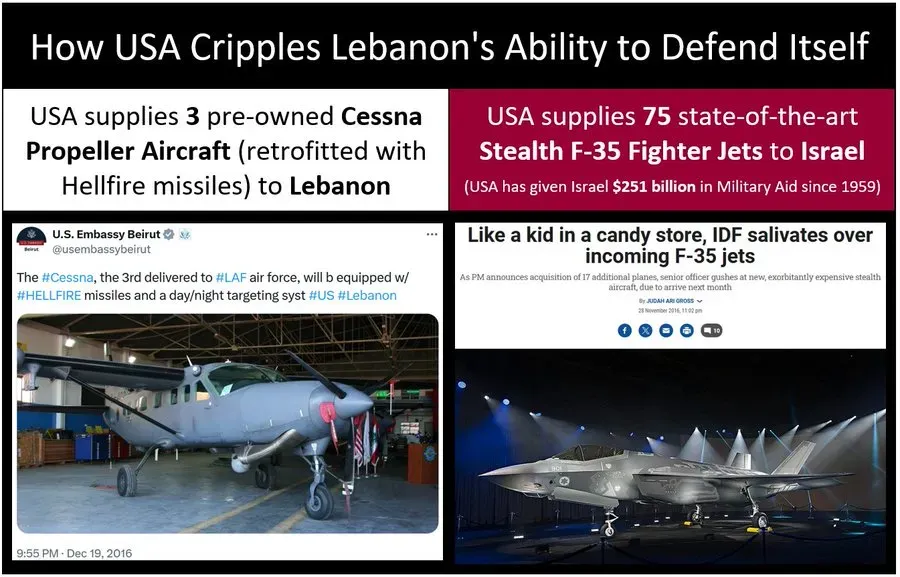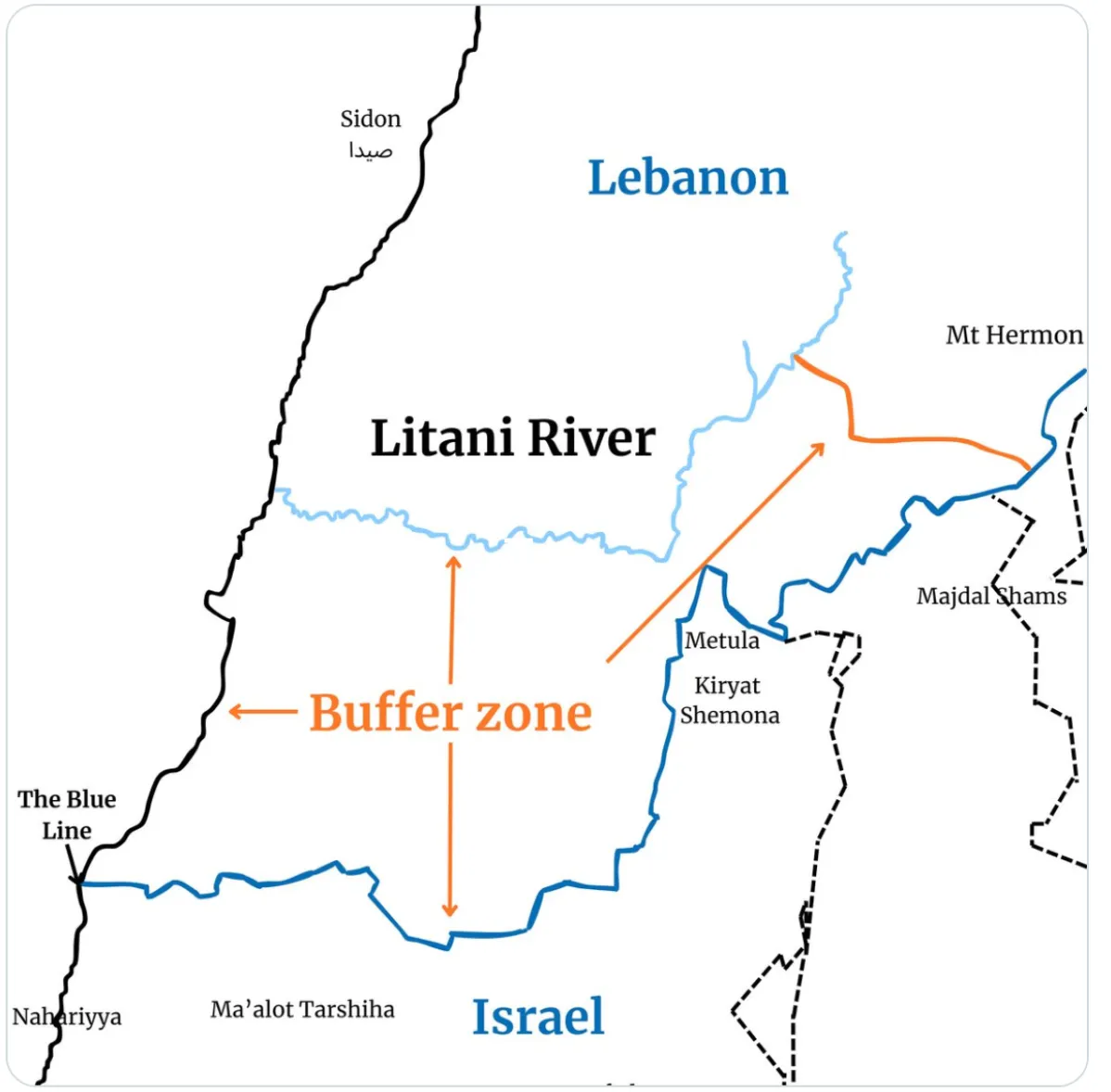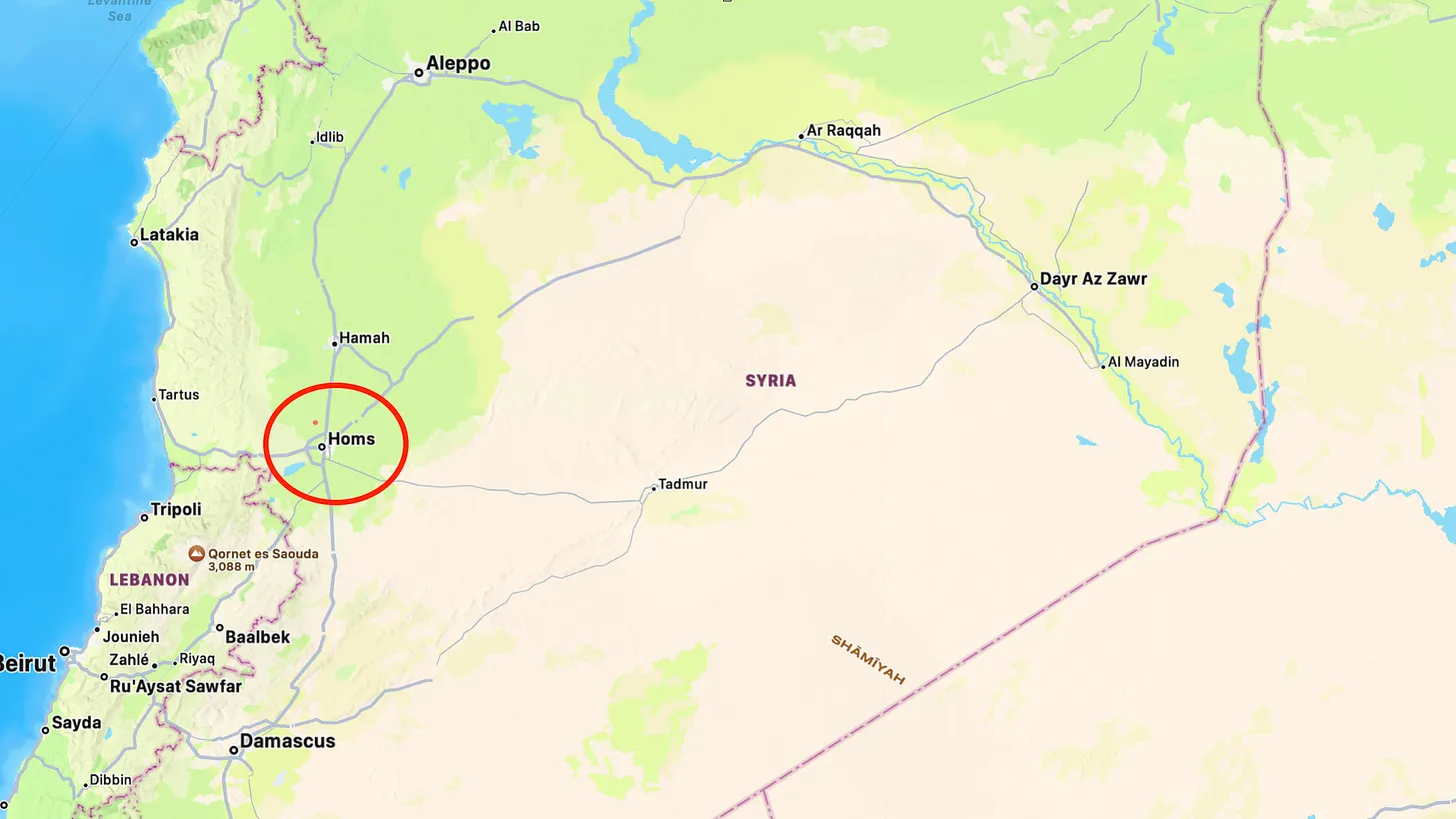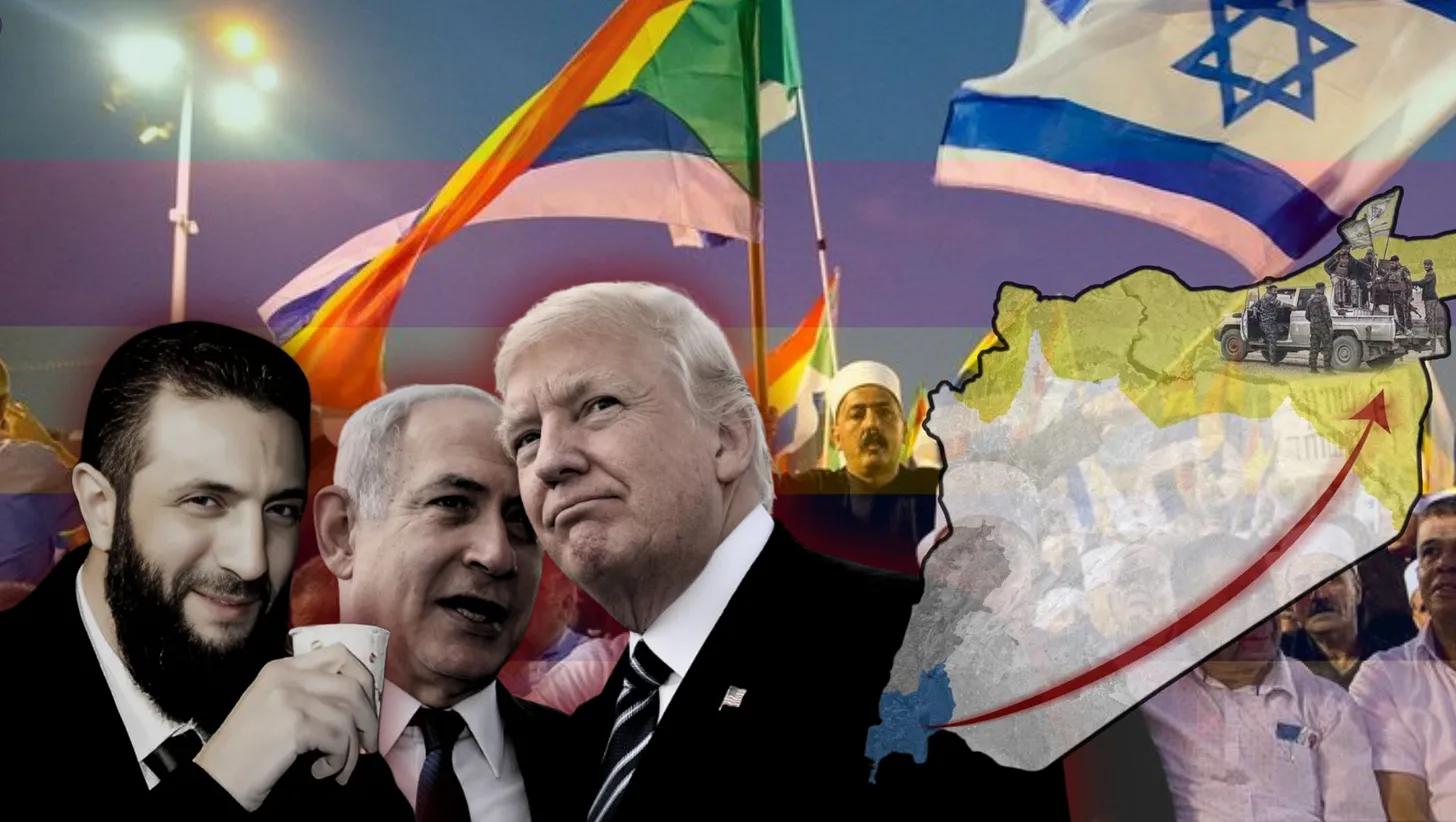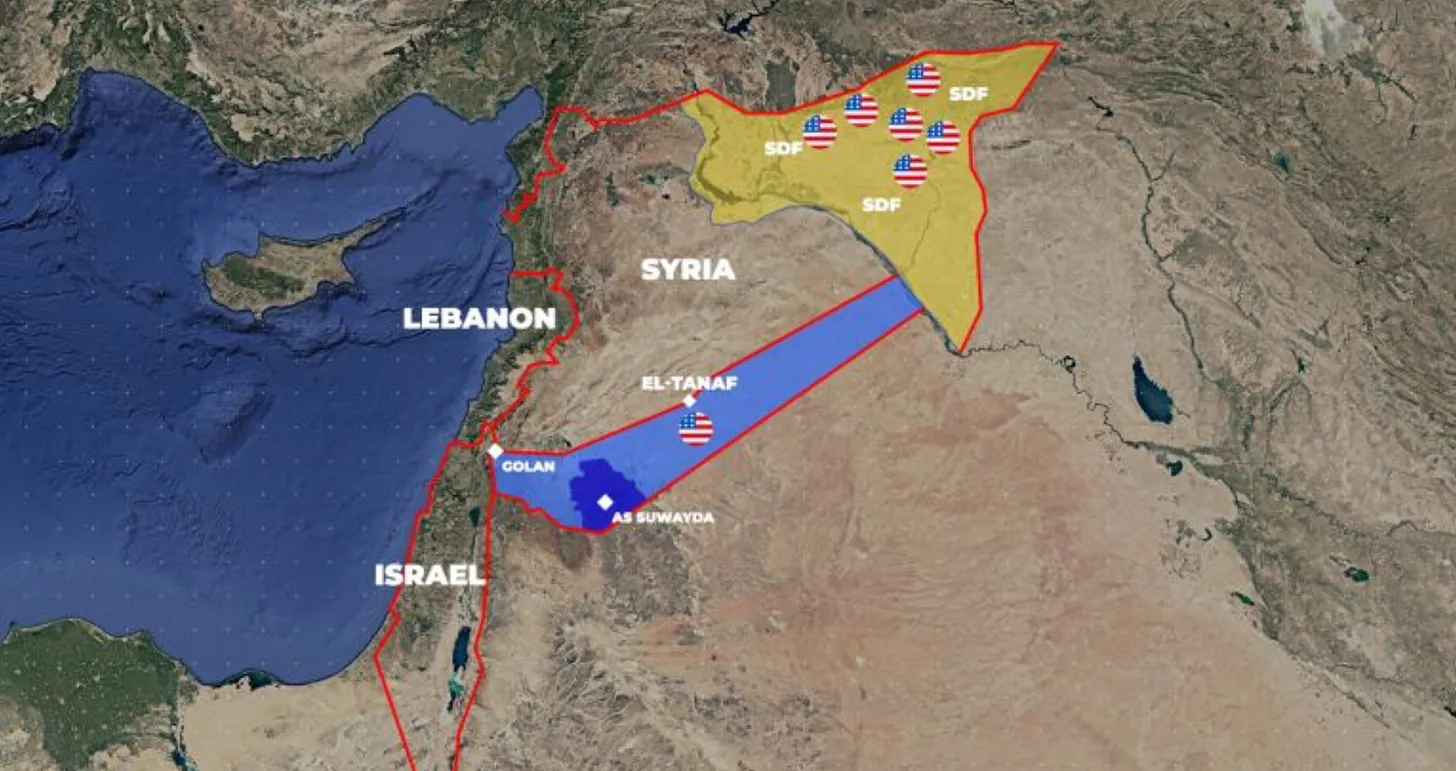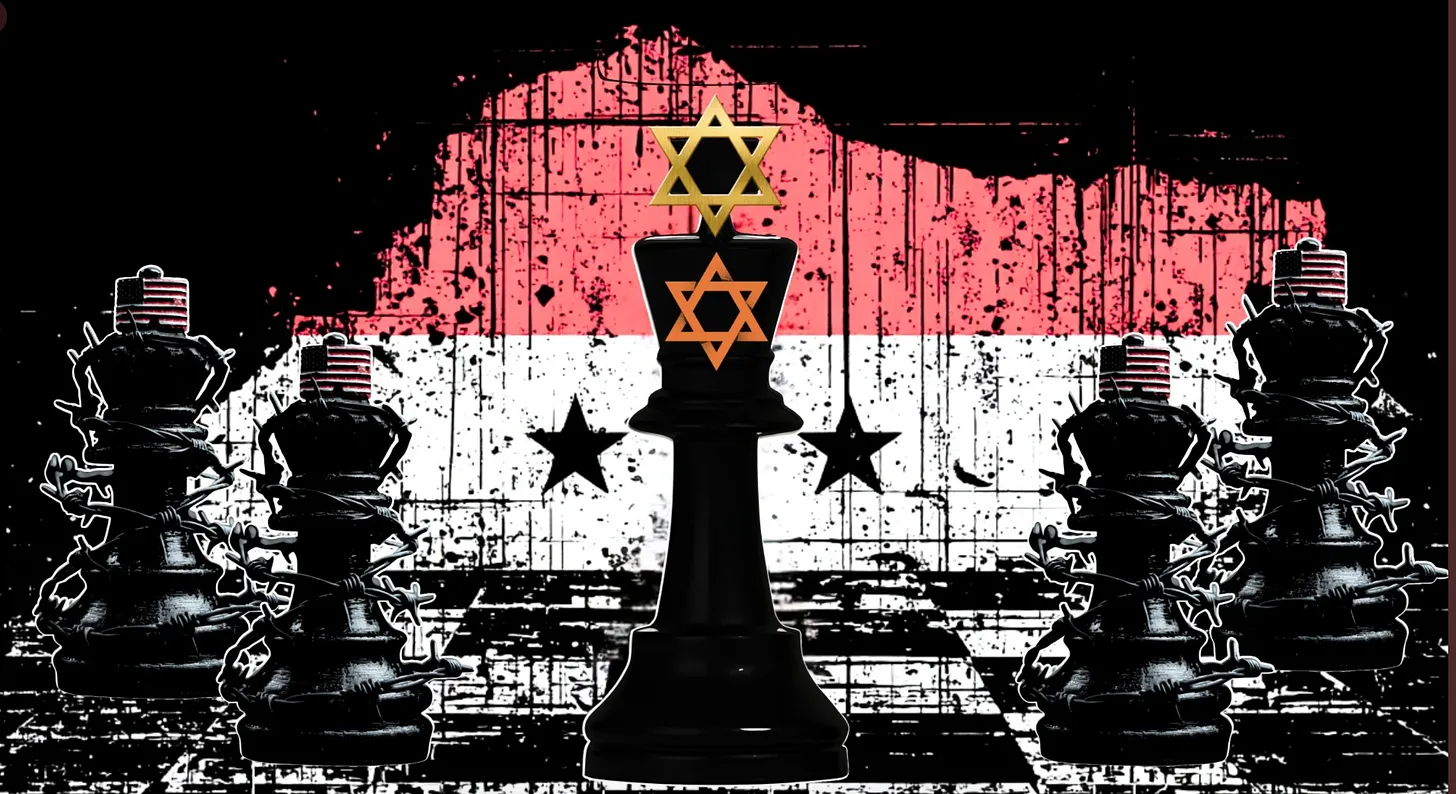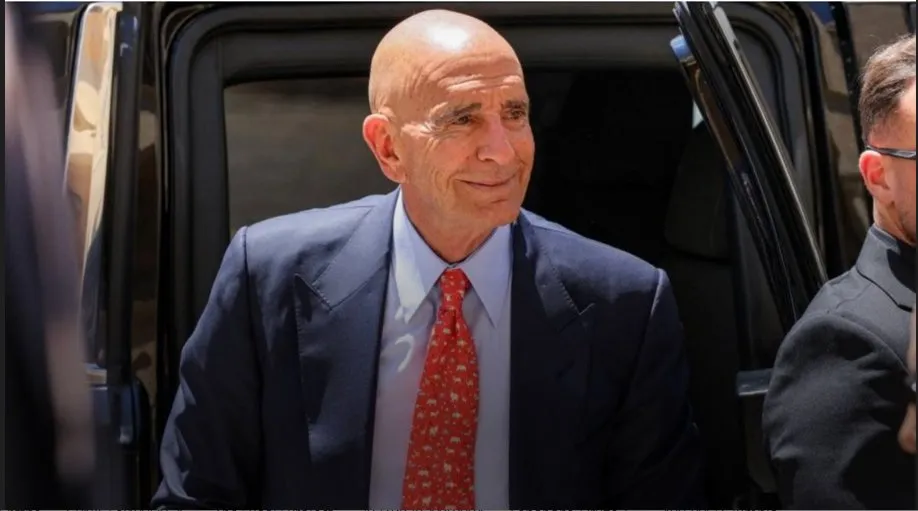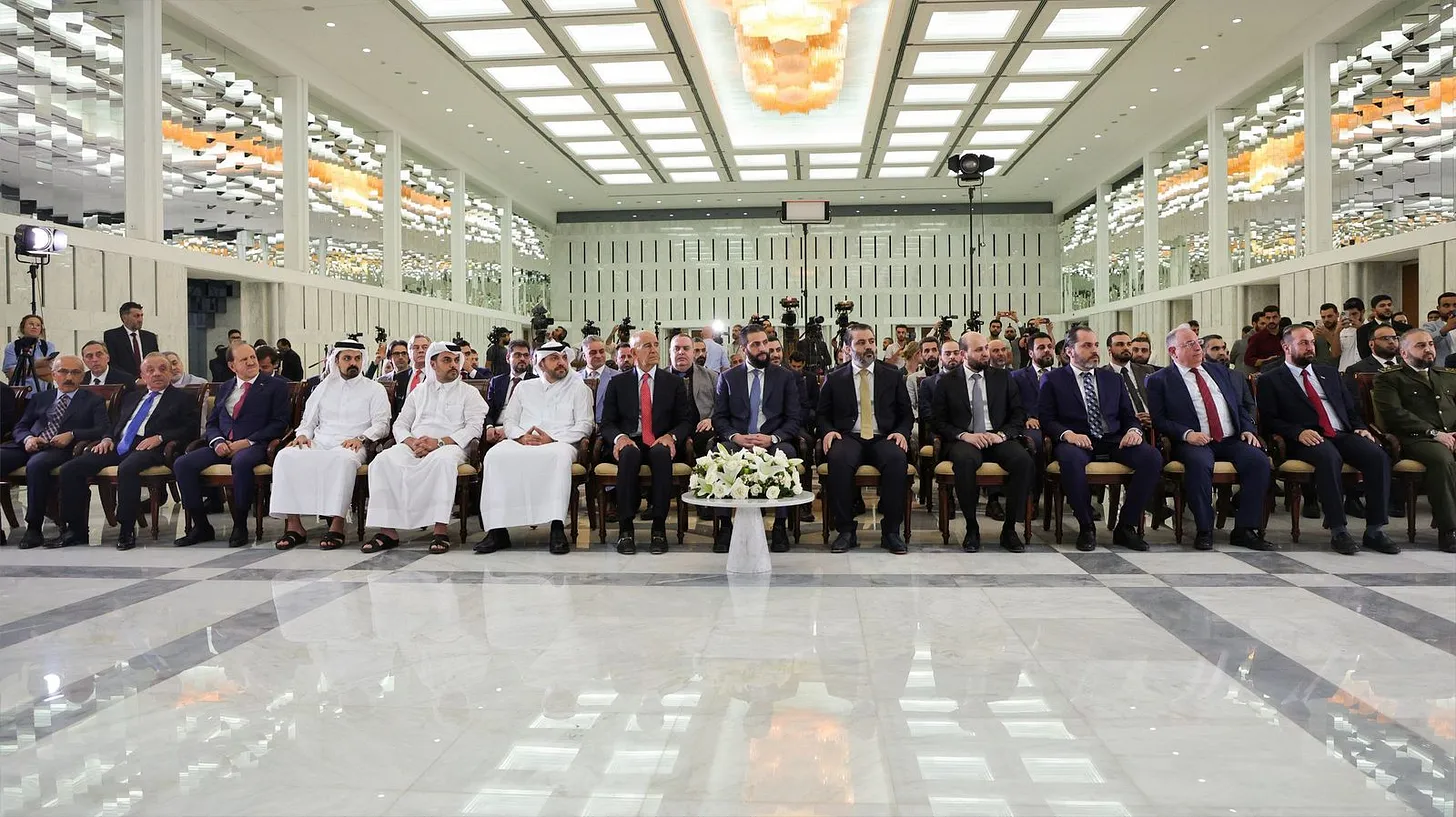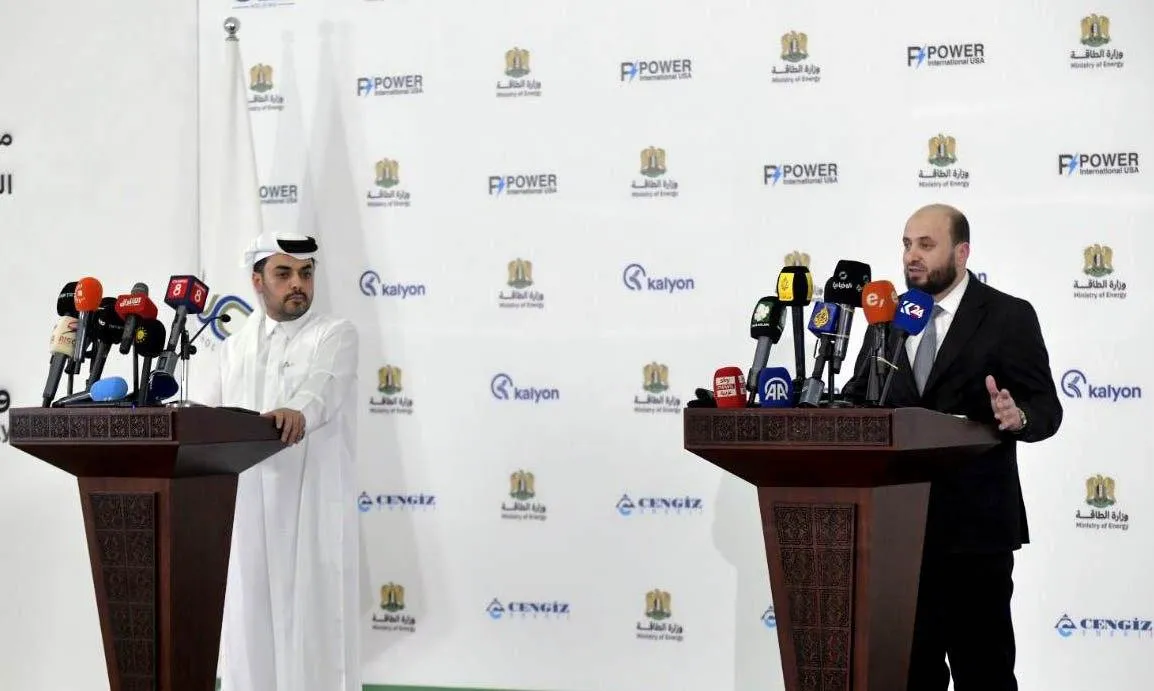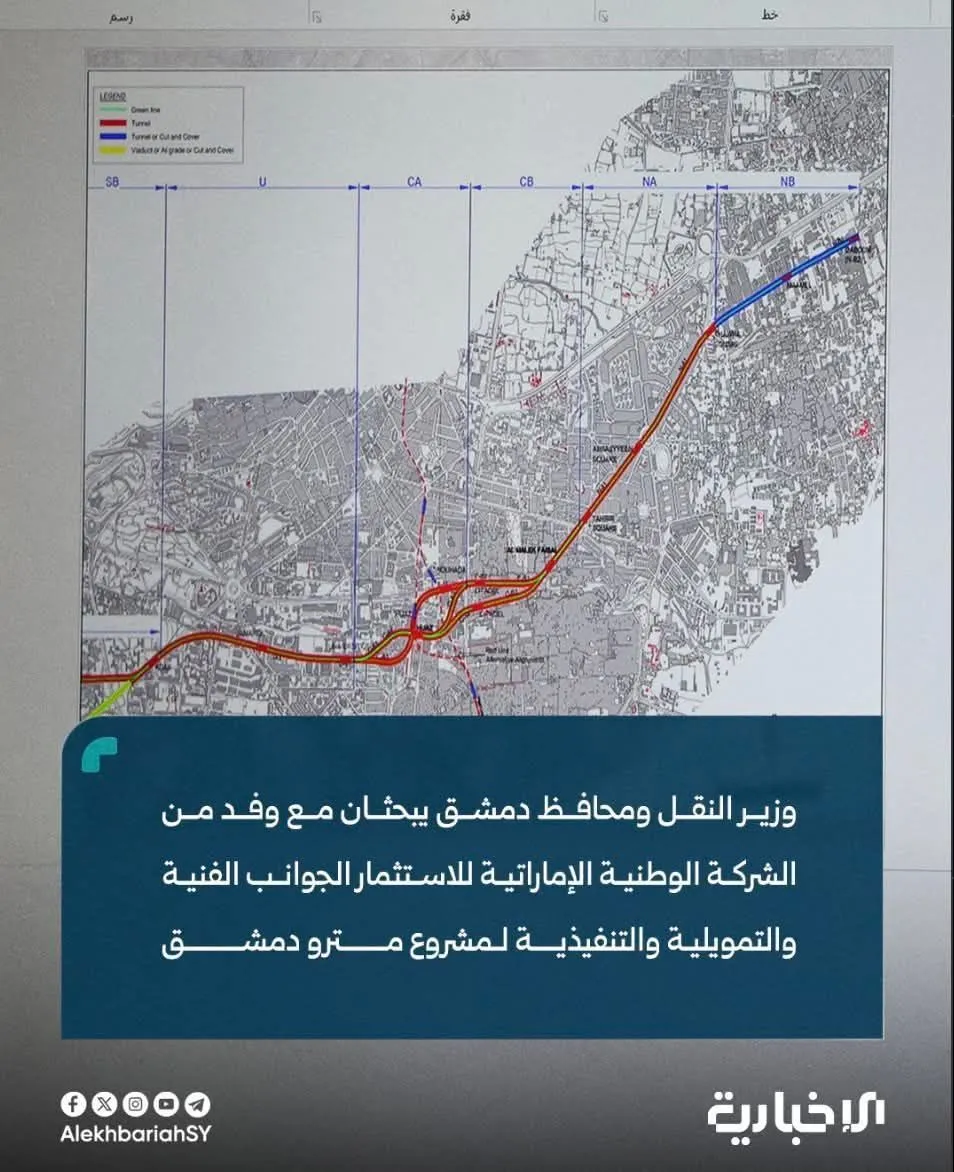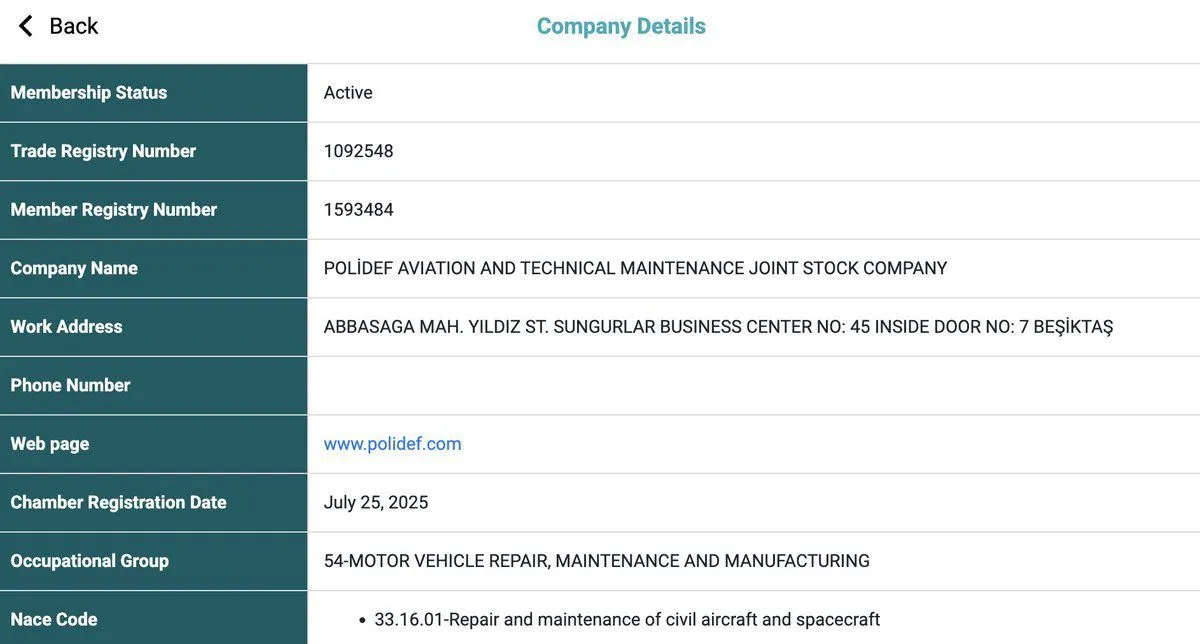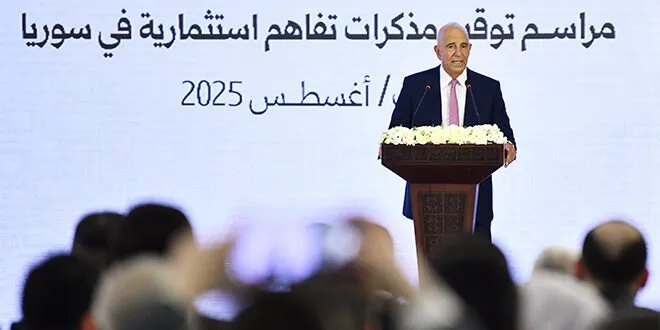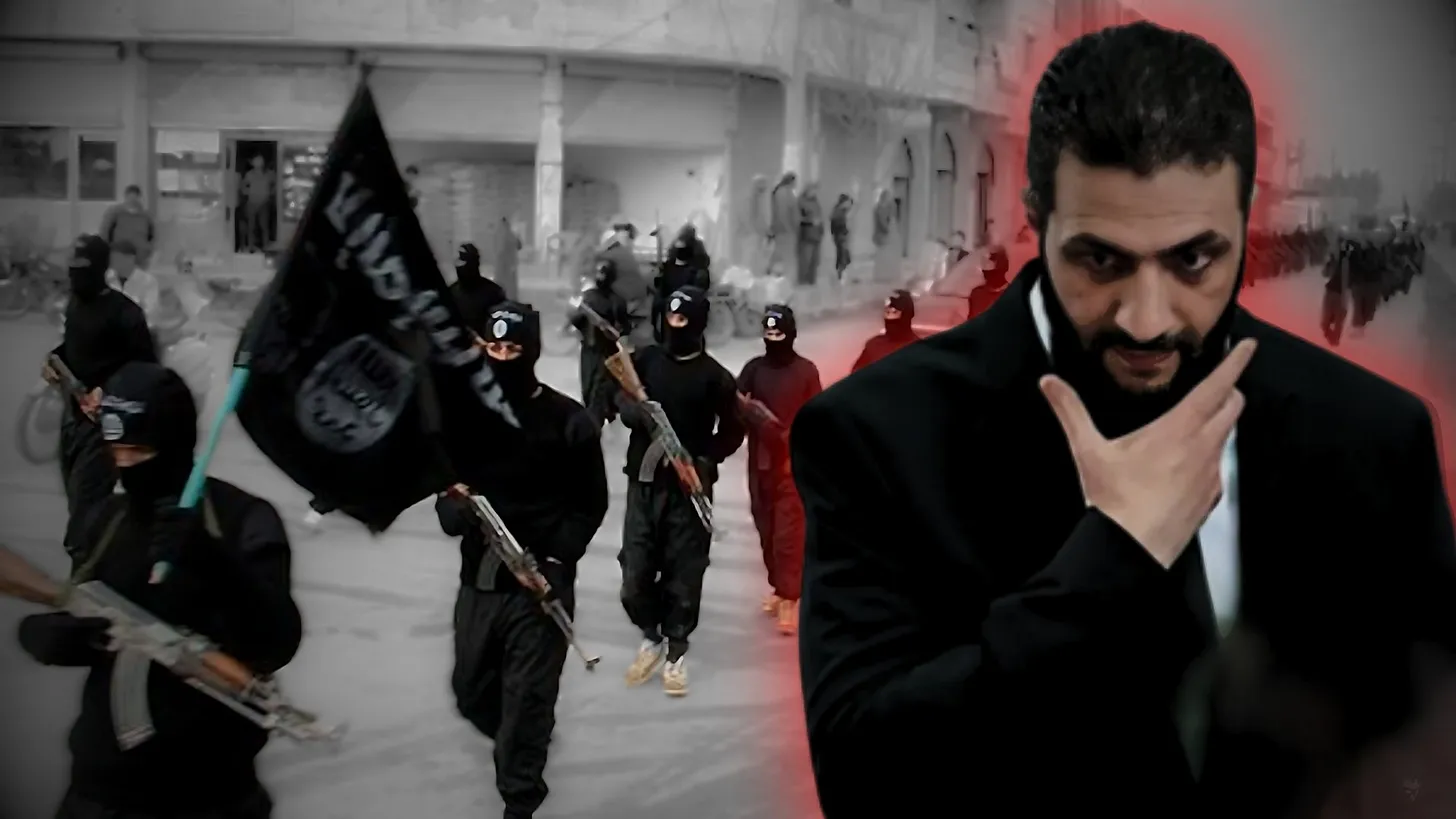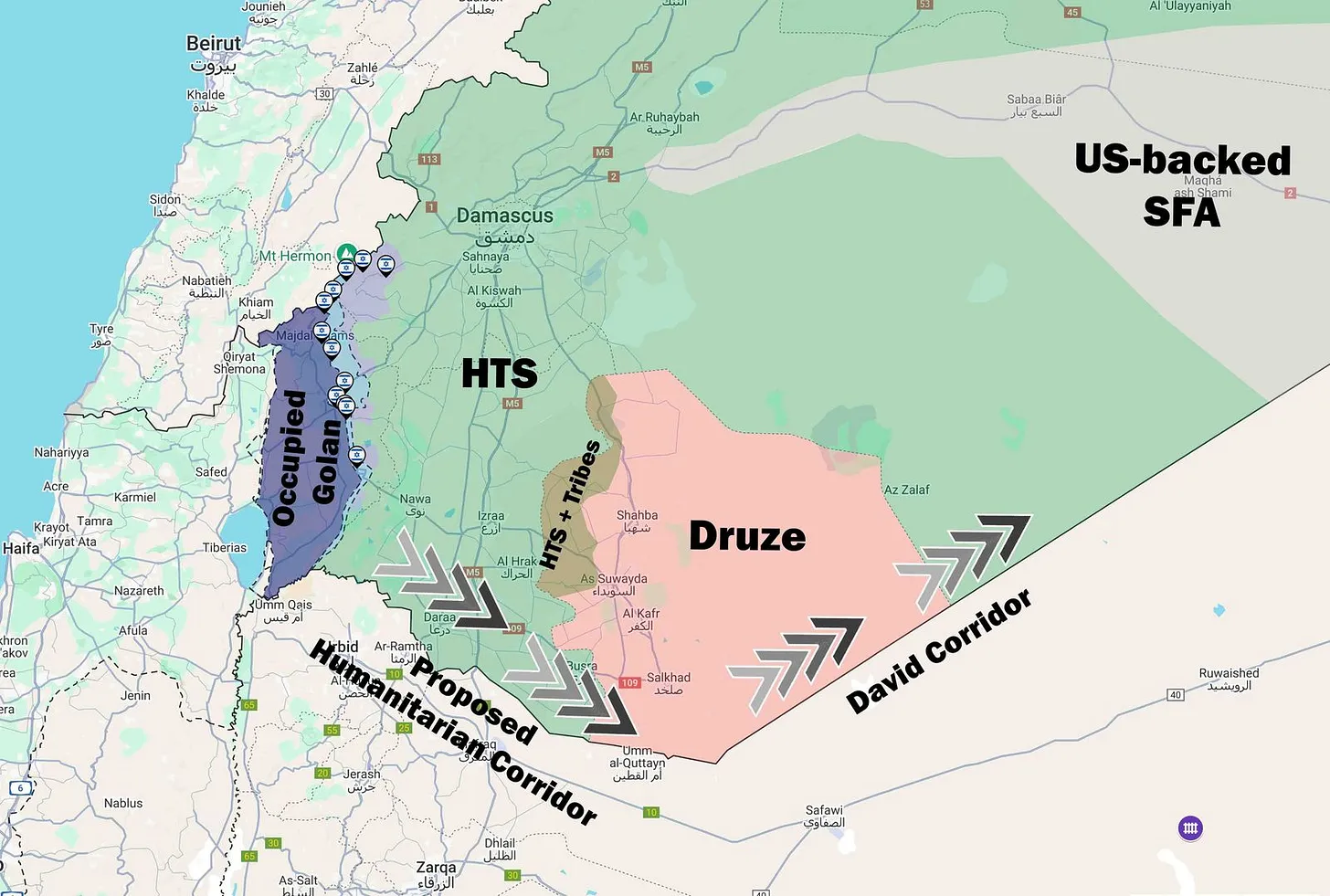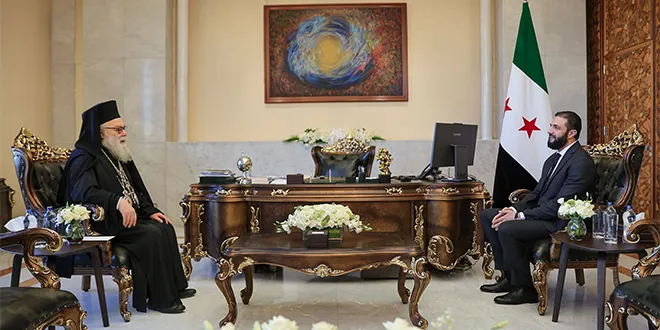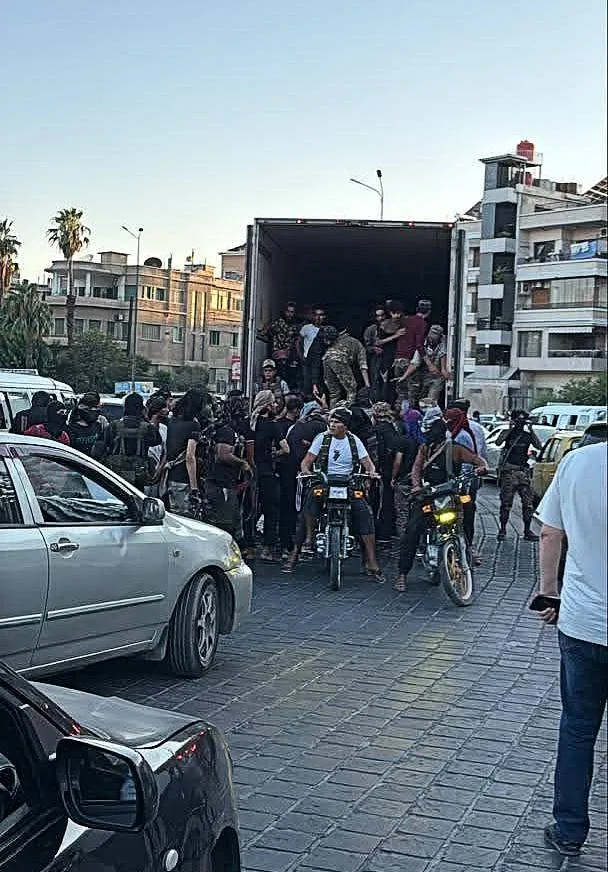Syria subdued, but for how long?
The first wave of anti-HTS resistance has been defeated, but more will surely rise.
Proletarian writers
Friday 1 August 2025
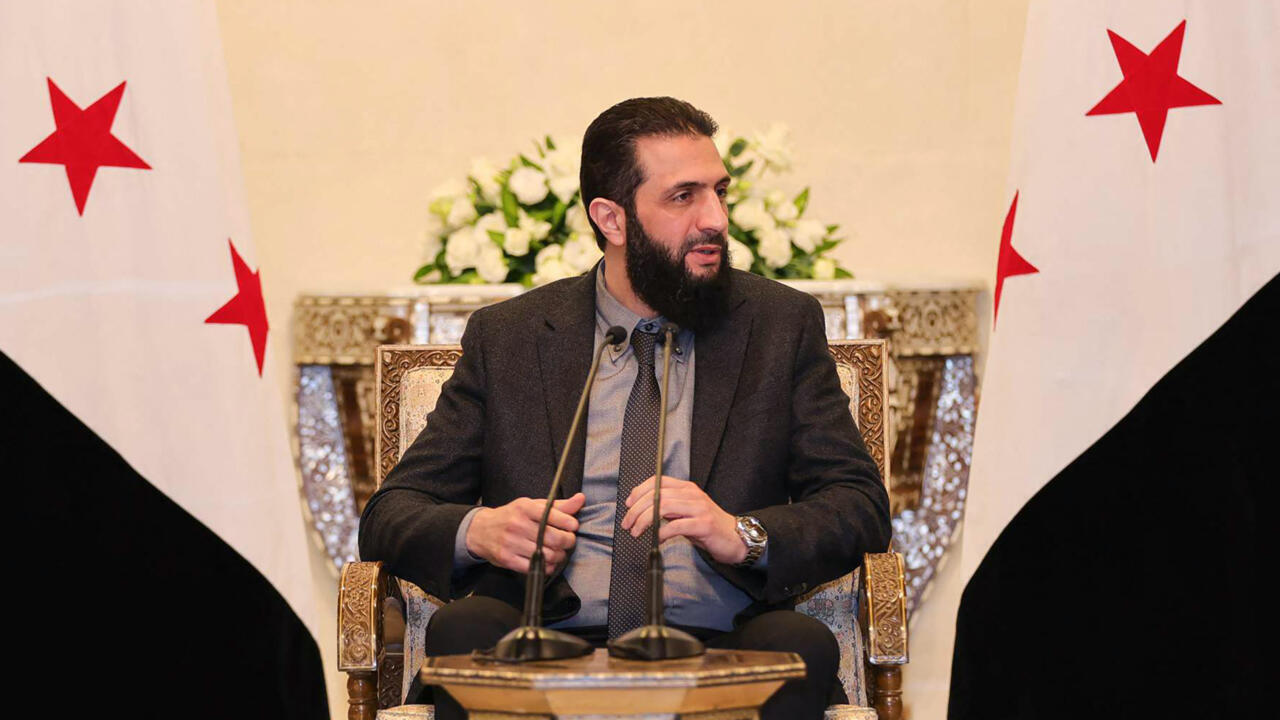
The destruction of the Syrian Arab Republic was a major blow for the middle-eastern Axis of Resistance, but the overall balance of forces continues to shift away from the imperialist powers and their regional proxies.
As anyone who has not lived in a cave for the past 15 years will know, Syria was devastated by a bloody foreign-funded civil war/invasion from 2011 through to around 2018. Following this were several years of relative ‘peace’, during which the country was further crippled by a brutal economic siege, imposed by US imperialism through the so-called Caesar Act, which effectively kept the country in ruins and prevented any attempt at reconstruction of destroyed industry or infrastructure.
And to further starve the Syrian population, the USA set up a de facto colony in Syria’s north-east region, from where they were able to monopolise (ie, to steal) the country’s bread basket (wheat fields) and energy resources (oilfields).
That war, presented throughout the corporate media as having been started by ‘protestors who were fired upon’ by government forces in 2011 and took up arms in response to ‘fight the dictatorship’, was actually planned well in advance by the USA, Britain and their regional proxies. The motive? To destroy the last remaining sovereign Arab country that shares a border with Israel, which had steadfastly refused to normalised relations with the zionist state, gave unwavering support to the Palestinian resistance forces, and was a strong ally of Iran to boot.
The so called ‘Syrian rebels’ were really just gangs of mercenaries and extremist salafi-takfiri thugs recruited from every corner of the world. They made up a murderous proxy army that was lavishly funded, armed, trained and directed by US and British imperialism, with considerable support from France and Germany, and much of the heavy lifting done by regional stooge regimes such as Turkey, Israel and the Gulf states. These supposed ‘rebels’ also enjoyed unceasing propaganda support across western media.
For 13 long years, the beleaguered Syrian people struggled against this ferocious onslaught, during which time the sovereign, secular Arab nationalist government headed by President Bashar al-Assad stood virtually alone on the international stage, with only Iran and Russia in support.
Finally, in December 2024, the long-besieged government of President Assad, who by that point had spent more than half of his 24-year rule fighting to defend the country, collapsed in the face of a renewed offensive by the Hayat Tahrir al-Sham (HTS) rebel group, which swept the country in little more than a week.
HTS and al-Julani
Like virtually all the Syrian rebel groups, HTS is a sectarian sunni-salafi jihadist organisation – a terrorist grouping that is officially proscribed even in western countries like Britain that covertly created and supported it. It is a rebrand of the infamous al-Nusra Front, which was openly affiliated to al-Qaeda (remember Osama bin Laden?)
Until Abu Bakr al-Baghdadi split off to form Isis in 2014, al-Nusra was widely regarded as the most violent and extreme of the various Syrian death squads, gaining notoriety in the early days of the war for its use of indiscriminate car bombs in crowded civilian locations.
HTS is led, like al-Nusra before it, by Abu Muhammad al-Julani, a typical warlord and imperialist mercenary who has spent most of his life in the ranks of al-Qaeda. Initially based in Iraq, he oversaw the murder of thousands of shia civilians in car bombings and suicide attacks aimed at igniting a sectarian war that would benefit only the Anglo-American occupation forces.
He was later transferred to what is alleged to be his native land (although this is disputed) at the start of the Syrian war. There he was tasked by his imperialist handlers with carrying on his dirty work, setting up al-Nusra for the purpose of igniting violent sectarian conflict.
Unlike the other countries in the middle-eastern Axis of Resistance, Syria has an overwhelming majority of sunni muslim Arabs, followed by a Kurd-dominated north-east (mostly sunni, but typically more secular), with significant minority communities of alawites (an offshoot of shia islam), christians, druze (a non-muslim monotheist faith native to the Levant) and shia muslims interspersed throughout the country. Most alawites are concentrated in the Latakia governorate in the north-west, where they form a local majority in much of the countryside. President Assad and many of his inner circle were of Alawite background.
These mixed demographics provide fertile ground for imperialist-promoted divide and rule in general, and for salafi-takfiri ideology in particular. This is a weaponised and extremely chauvinist/supremacist version of sunni islam characterised by a harsh literalist interpretation of islamic sharia law and fierce persecution of christians. It calls for the outright extermination of minority muslim groups and of the various small pagan communities scattered across the region.
The governments of presidents Bashar and Hafez al-Assad (his father and predecessor) were steadfastly secular and nationalist in orientation, ruthlessly supressing salafist lunacy for decades in order to maintain the country’s multiethnic and non-sectarian foundation. This non-partisan approach to Syrian statehood earned the Assads the burning hatred of sunni chauvinists globally – a hatred that has been skilfully nurtured and directed by the imperialist powers.
All this helps to explain why it was that the ‘rebels’ who were repeatedly celebrated and cheered as freedom fighters by international corporate media always turned out to be bloodthirsty sectarian terrorists hoping to cleanse Syria of all its religious minorities and impose an the most extreme salafi-takfiri regime on the country.
It should be noted that these headchoppers’ interpretation of ‘sharia law’ is not native to islam but has been created by the imperialists for the sake of brainwashing yet another proxy army (alongside the Ukrainian Banderites, the Israeli zionists, the Uyghur muslims etc).
Moderate rebels?
Indeed, this quickly became something of a PR issue for HTS’s imperialist backers, who began to use the term “moderate rebels” to try to convince the home populations that there were two sets of fighters in Syria, of whom only some were ‘bad’ while the others were ‘good’.
As the war progressed, however, and the empty liberal figureheads of 2011’s supposed ‘revolution’ were sidelined in favour of the real takfiri driving force at the heart of the west’s proxy invasion army, the concept of the ‘moderate rebels’ was increasingly exposed and derided.
Who can forget Abu Sakkar, the cannibalistic sadist who filmed himself cutting out the heart of a dead Syrian soldier and eating it? Or Abdel Baset al-Sarout, the ‘goalkeeper of the revolution’ who would sing songs about Osama bin Laden and 9/11 and called on the “brothers” in Isis to join forces with his own to fight the christians?
What about Zahran Alloush, who called for Damascus to be cleansed of its christian and alawite populations? (He later claimed to western media that he had been “stressed” at the time.) Or the Nour ed-Dine Zenki brigade, widely known for the infamous video clip which showed them brutally beheading a young boy with a knife after slicing his throat?
Today, mention of such inconvenient facts is greeted by supporters of the so-called ‘Syrian revolution’ with the blanket response – “But Assad”. “But Assad did worse … but Assad killed more … but Assad did this, Assad did that, etc,” as if, even if it were true, that would somehow justify the butchering of Syria’s minorities.
In fact, the allegations of war crimes made by the west against the Syrian Arab Army and President Assad were all based on media manipulation, circular reporting and unverified west-controlled ‘investigations’ – a long list of lurid allegations with a distinct lack of solid video or photographic evidence to back them up, much like the media hype over alleged ‘Russian war crimes in Ukraine’ today.
By contrast, like zionist crimes in Gaza, many of the terrorist atrocities carried out by Syria’s supposed ‘rebels’ were filmed and uploaded to social media.
With the rise of Isis, al-Nusra Front’s leaders – or, more correctly, the western and Gulf state/Turkish intermediaries directing them – took the opportunity to play a good-cop, bad-cop routine. Compared with the psychotic, openly and unashamedly bloodthirsty Isis, al-Nusra Front aimed to present itself as a more ‘moderate’ (don’t laugh) alternative.
The group was rebranded as Hayat Tahrir al-Sham (HTS) and publicly dissociated itself from the international al-Qaeda network (a network which by that point had largely disintegrated anyway as its supporters deserted en masse for Isis). It spent the next few years holed up in its stronghold of Idlib, biding its time and preparing for the order to launch a new offensive.
Whilst on the ground reports from Idlib largely painted a picture of salafi-takfiri gangsters who dealt ruthlessly with any dissent, the international media was hard at work transforming the image of al-Nusra-turned-HTS chief Julani from ‘terrorist gangster’ to ‘president-in-waiting’.
The spectacularly rapid collapse of the entire state machine of the Syrian Arab Republic in December 2024 came as a shock to most outside observers. Particularly shocking was the lack of resistance put up by the alawite-majority heartland of Latakia, where a decade earlier al-Nusra mercenaries had launched a series of bloody raids that left hundreds of civilians dead.
Syrian rebel leaders of all stripes have never made a secret of their burning desire to have all alawite citizens murdered – an inconvenient fact carefully buried by their western PR handlers.
What was even more incredible, however, was how many muslims were convinced that the new regime set up by the imperialist/zionist-backed rebels was going to be a great new islamic power that would soon march on Jerusalem and liberate Palestine.
Despite the mountains of evidence, from the original Wikileaks revelations revealing the US-zionist plot to destroy Syria, to US senators’ and zionist politicians’ photoshoots with the rebel leaders, to the Israelis sending ambulances throughout the war to treat wounded rebel fighters, to the open glorification of the salafist gangsters for years throughout the pro-zionist media, a huge number of sunni muslims globally continue to cling on to a propaganda fantasy of heroic Syrian revolutionaries fighting side by side with Palestinians to bring glory to the islamic ummah (commonwealth of believers).
Yet another west-backed regime-change operation
It is hardly a coincidence that as soon as the Israelis agreed a ceasefire with Hezbollah and their forces in the north were freed up to intervene in Syria, the rebel offensive broke out. Gaza was still being bombed and genocided on a daily basis. Why would any sincere liberation movement choose such a time to start an inter-Arab war and distract from the Palestinian cause?
Even the openly submissive, almost grovelling attitude taken by the new regime towards Israel – particularly following the series of massive zionist strikes that destroyed the country’s air defences and its military and industrial production capabilities – is routinely passed off as some kind of 4D chess:
“They’re weak, they’ve just been fighting a long war, their country is in ruins, they need to be patient, why do you want them to start a new war, you’re so unreasonable!”
It is strange that there was no weakness or tiredness when they launched that lightning offensive to destroy the last remaining anti-zionist Arab nationalist regime bordering Israel. But when faced with the zionist army, everyone is suddenly exhausted from war!
Thus it is that we are now presented with the obscene spectacle of an army of ex-Isis fighters, led by al-Qaeda in Syria’s former emir, violently overthrowing a democratically-elected government and setting up a coup regime, whilst being unanimously and enthusiastically welcomed by a motley crew of corporate media, western governments and liberal activists side-by-side with the conservative muslim masses, their mosques and their various community organisations, all united in celebration of the destruction of sovereign and independent Syria.
Never missing an opportunity to kick their opponent while he is on the floor, the zionist regime next door immediately launched a massive aerial blitz across Syria, reportedly destroying the majority of the Syrian state’s remaining arms depots and independent production capabilities, in addition to launching a major land grab into southwestern Syria.
Predictably, this action was spun by the supporters of the so-called ‘Syrian revolution’ as proof that Israel sees Julani as a mortal threat – thereby ‘proving’ that he is an independent sovereign ruler who will bring greatness to Syria!
Of course, most objective observers drew precisely the opposite conclusion: as long as President Assad and his Iranian and Russian allies were in control, the zionists were unable to launch such a large-scale aggression. Now that the Axis of Resistance forces have departed, the country is wide open and vulnerable, and the zionists are free to bomb the country back to the Stone Age in their bid to ensure it will never again stand on its feet (and thus pose a deadly threat to imperialism in the middle east).
In any case, the premise of the “Julani is Israel’s worst nightmare” argument fell apart as the new Syrian regime steadfastly refused to take any action whatsoever in defence of the country, refusing even to utter a single in condemnation of the zionist blitzkrieg.
Even Julani’s western handlers appeared a little taken aback by how pathetic the response of the ‘revolutionaries’ was to Israel’s criminal aggression. One western journalist asked a government spokesman incredulously: “Are you seriously telling me you have nothing to say about Israel launching three hundred strikes on this country?”
Unsurprisingly, the HTS regime’s strident pacifism does not extend to Syria’s minority groups, in particular those suspected of loyalty to the old system. It may be dressed up in religious gobbledegook, but behind the supposedly ‘islamic’ excuses for their rapine and murder, it is not hard to see yet another religion being weaponised by the imperialists in order to brainwash a proxy army and turn it against the enemies of imperialist domination of the region and its energy resources.
It did not take long for the mass killings of minority alawites, christians and shias to begin in earnest. Innumerable gory videos appeared on social media showing the ritual humiliation, torture and execution of unarmed men – and in some cases even young boys – by militants shouting sectarian ‘sunni extremist’ slogans. Many captives were forced by their power-intoxicated captors to crawl on their bellies making animal noises, dehumanising and humiliating them before they were killed and their bodies left to rot in the streets.
Reports also began to emerge of abductions of young women from minority communities, to be transported to the traditional salafi stronghold of Idlib and sold into sexual slavery. One infamous piece of footage showed a group of such women in chains while an auctioneer declaimed his wares, describing those for sale by their religion or ethnicity.
Resistance begins to emerge
A number of small resistance groups began to emerge shortly after the HTS conquest of Damascus, mostly based around officers from the Syrian Arab Army and conducting small-scale hit-and-run attacks against the forces of the new regime.
No doubt there were some who imagined that so-called ‘Rojava’, the Kurdish-run statelet in northeast Syria feted by anarchists and left-liberals as some kind of revolutionary socialist commune, would now raise the banner of struggle against such a viciously reactionary regime. But no, displaying that utmost cynicism unique to lackeys of imperialism, the authorities of Rojava quickly signed an accord with the new regime, agreeing to begin the process of handing over control of their anarchist paradise to Julani and his gang of Isis/al-Qaeda veterans.
So much for the ‘Rojava revolution’. As we have long held, its ‘progressive’ credentials were merely a PR veneer to disguise the role the Kurds have long been playing in Syria – that of agents of imperialism working hand in hand with the USA, Britain and Israel to starve and disintegrate the Syrian Arab Republic.
Following months of increasing persecution, a section of the alawites reached the end of their patience and launched a general uprising against the HTS regime. This erupted in early March, with a combination of unprecedented mass demonstrations and armed action by resistance groups temporarily forcing regime security forces out of a number of towns and cities in Latakia, the alawite heartland and the country’s gateway to the Mediterranean Sea.
Despite the valiant and heroic efforts of these patriotic Syrian youth, it became clear that the uprising was poorly timed. On the one hand, the new regime had had enough time to thoroughly consolidate its control over the state apparatus and what was left of Syria’s military assets.
On the other, the uprising came too soon for the majority of Syrians, who are not yet ready for a return to war, particularly Syria’s sunni Arab majority, who have remained relatively unscathed by salafi violence for the time being. This made it possible for the regime to mobilise the support of the sunni majority, with devastating consequences.
In addition, the uprising lacked any international support – a major deficiency in a country where virtually every militia and armed organisation is dependent on backing from a foreign power. The western imperialist countries and their Turkish and Gulf lackeys would naturally support their new stooge in Damascus, having spent billions of dollars and years of effort to get him installed.
Meanwhile Russia and Iran, the traditional allies of anti-imperialist Syria, not entirely unreasonably judged it unwise to get involved in an uprising that had little support outside of Latakia that would only complicate their future dealings with a regime already inclined to shut their influence out of the country.
As a result, the Julani regime was given a free hand to violently crush the uprising – and crush it they certainly did, in true Black Hundreds style.
The repression of the uprising, aided by tens of thousands of sunni extremists bussed in from all over Syria and an unknown number of foreign mercenaries of Chechen, Uyghur and central Asian origin, rapidly descended into outright genocide. Hordes of Interahamwe-style gangs of sunni extremists went from village to village systematically exterminating alawite inhabitants – men, women and children alike.
In a bloodbath reminiscent of the Raj’s parting gift to the Indian subcontinent, many alawite victims were identified for execution by sunni neighbours with whom they had lived peacefully for years. As the body count began to pile up, first into the hundreds and then thousands in the space of barely a week, it became impossible for the imperialist media to continue to ignore the massacres.
Cue a slew of propagandistic articles aimed at whitewashing yet another genocide. Corporate presstitutes lined up to assure their readers and viewers that they had spoken to local Syrians, who supposedly confirmed that “Syrian state security forces” (ie, the Julani regime’s thugs) had come to their rescue and that the killing was committed by some unknown entities that had appeared out of nowhere, disappeared into nowhere, and were certainly not connected to the new regime in any way.
The Syrian president had promised a full and transparent investigation, we were told. With his suave suit, immaculate haircut and endorsement of the world’s leading free-market democracies, who could doubt his integrity?!
Meanwhile, back on planet Earth, thousands of terrified alawite civilians trapped in a country they no longer recognised fled towards safety at the one remaining place controlled by a force they knew they could trust: the Russian airbase at Khmeimim. The Russian military may no longer be in a position to protect Syria from the ravages of imperialist mercenaries, but they have not hesitated to provide a shining example of what real humanitarianism looks like – as opposed to the cynical, Machiavellian kind favoured by imperialism.
Regarding the systematic targeting of the alawite minority for extermination, a number of commentators have explained this by referring to the longstanding religious prejudices held by salafi-sunni extremists against the sect. In particular, the infamous fatwa by the 13th-century Syrian sunni scholar Ibn Taymiyyah, which stated that alawites “are more infidel than christians or jews” is often brought up as a ‘motive’ for the extremists’ actions.
Whilst there is no doubt that these ancient fatwas and religious prejudices have indeed been recycled out of the dustbin of history to justify the current terror campaign, to focus on this exclusively is to miss the point. The fact of the matter is that, regardless of what the HTS mercenaries proclaim in their barely-coherent video ramblings, they are not killing alawites because of something that Ibn Taymiyyah or any other medieval religious leader wrote hundreds of years ago.
Rather, the alawites are being killed because they are the most advanced, educated and progressive section of the population, imbued with pan-Arab nationalist, anti-imperialist and anti-zionist sentiments to a much greater degree than the majority sunnis. They are targeted for extermination for the same reason as the Palestinian people: because imperialism and zionism, the real rulers of the new ‘free’ Syria, want to punish them for their resistant stance – and to prevent its re-emergence.
For the foreseeable future, Syria has been subdued. Its war-weary population has largely submitted to the new pro-western regime, whose diplomats have switched Isis camo for crisp new suits as they sit down with IMF and World Bank executives and draw up plans for selling off what remains of Syria’s assets to the highest bidder.
At the same time, offices of Palestinian liberation movements are being raided and their leaders arrested, whilst unbridled terror is practiced against those segments of the population most inclined to take a stand against ‘New Syria’, with special brutality reserved for the alawites (much as it has been for Russian speakers in Ukraine and the Baltics under Anglo-American control).
Meanwhile, Israel continues expanding its land grab in the vain hope of establishing its long-desired ‘Greater Israel’ project on behalf of imperialism, and a de facto partition of the country between Turkish and Israeli-backed proxy forces looks increasingly likely, assuming such a plan receives the blessing of US imperialism.
Nonetheless, in the midst of darkness there remains flickers of hope that one day, a proud, anti-imperialist Syria may rise again.
Despite the present regime of terror and the decimation of their communities, a smattering of resistance cells remains and continues to fight against the mercenaries of imperialism. It is inevitable that they will eventually gain ground, as the Syrian people taste the bitter pills of neocolonialism and normalisation with Israel.
Moreover, the fall and subjugation of Syria cannot change the overall picture, which is that the balance of forces in the middle east and across the world has shifted decisively in favour of the Axis of Resistance. The complete failure to destroy Palestinian resistance, despite conducting a mass genocide against the civilians of Gaza, the failure to crush Lebanese resistance, and the failure to succeed in its latest regime-change operation in Iran are all signs that the tide is turning.
When we take a step back and look at the whole of the middle east, we can see that is not the resistance that is on its last legs, but the imperialists’ most important regional proxy, zionist Israel. Its fall is inevitable and much nearer at hand than western analysts care to admit.
The time is coming when the whole paraphernalia of imperialist control of the middle east will be swept away – from the zionist settler-colony to the Gulf autocracies, from US and British military bases to their Nato outpost in Turkey. The Syrian salafists, whose rule is intimately tied to the fate of imperialism’s Israeli and Turkish henchmen, will fall alongside them, and the Arab peoples, who have suffered so much for the crime of having been born in a region rich in energy resources, will finally have a chance to take control of their own lands, their own wealth and their own futures.
https://thecommunists.org/2025/08/01/ne ... -how-long/
******
Israel escalates attacks on Syria as Al-Sharaa reports progress on a Syria-Israel security deal
Israel has always employed the “negotiations under fire” tactic to impose its conditions before reaching any agreement with other parties in the region.
August 29, 2025 by Aseel Saleh
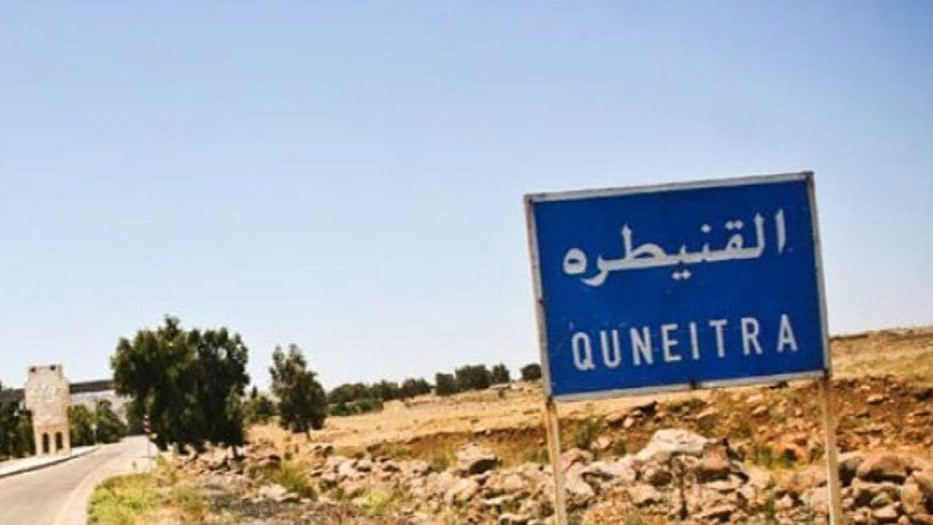
Israeli occupation launches incursions in areas of Damascus Countryside and Quneitra. Photo: Yemen Press Agency
The Israeli Occupation Forces (IOF) have intensified aerial attacks and expanded land incursions across Syria during the last few days. The attacks come in the wake of the announcement by Syria’s interim President Ahmad al-Sharaa on Sunday, August 24, that progress had been made on a possible security deal with Israel.
Syria TV quoted Al-Sharaa saying in a meeting with an Arab media delegation that there have been “advanced discussions on a possible security agreement between Damascus and Tel Aviv”.
Syria’s new ruler clarified to the delegation that “any understanding will be based on the 1974 truce line”, adding that he is open to taking “any agreement or decision that serves Syria’s and the region’s interests.”
Al-Sharaa’s remarks came less than one week after his Minister of Foreign Affairs and Expatriates, Asaad al-Shaibani, held a controversial US-mediated meeting with an Israeli delegation in the French capital, Paris. The move provoked backlash from the Arab grassroots, who considered it a step towards normalization with Israel.
Israel’s escalates its aggression on Syria while speaking of peace
Although Syria’s new government has repeatedly shown willingness to advance a peace process with Israel, Netanyahu’s government seems less eager to reciprocate the deal.
On Monday, August 25, Israel responded to Al-Sharaa’s enthusiastic remarks on a possible Syrian-Israeli security deal with multiple land incursions across the governorates of Rural Damascus and Quneitra.
According to the state-run Syrian Arab News Agency – SANA, an IOF unit consisting of 11 vehicles and over 60 soldiers advanced into the area between Beit Jinn and Beit Jinn Farm in western Rural Damascus, and seized control of Tal Bat al-Ward, a strategic hilltop at the foot of Mount Hermon.
Israeli soldiers are said to have opened fire towards civilians during the operation, with no casualties being reported. They also stormed several towns and villages in Quneitra countryside, where a number of houses were raided and searched before their withdrawal.
SANA pointed out that the IOF had carried out a similar military operation in the southern governorates of Quneitra and Daraa on Friday, August 22, during which they raided multiple towns, established checkpoints, and arrested several civilians.
It is worth noting that Israel has used the protection of the Druze, a religious minority, as pretext for continuously breaching Syria’s sovereignty since the fall of former Syrian President Bashar al-Assad.
Syria condemns the aggression, urges the UN to take “urgent and effective measures”
Syria’s Ministry of Foreign Affairs and Expatriates strongly condemned Israel’s aggression in a statement issued on Monday, calling it “a flagrant violation of the sovereignty and territorial integrity of the Syrian Arab Republic”.
The ministry considered the Israeli offensive a “dangerous escalation” that “constitutes a direct threat to regional peace and security”. It also warned that the continuation of such violations “undermines stability efforts and exacerbates tension in the region”.
The Syrian government called on the United Nations and the UN Security Council to “assume their legal and moral responsibilities”, and to take “urgent and effective measures to deter the occupation authorities from continuing with their aggressive practices, and ensure their accountability in accordance with the provisions of international law.”
Israel will not withdraw from Syria, says Katz
Israel’s Defense Minister, Israel Katz, responded to Syria’s condemnation statement in a post he wrote on X on Monday:
“The IDF will remain at the peak of Mount Hermon and in the security zone necessary to protect the Golan and Galilee settlements from threats looming from the Syrian side as the main lesson from the events of October 7.”
“We will continue to protect the Druze in Syria as well,” Katz added.
Israeli warplanes launched aerial raids on Syria after spying equipment was discovered
On Tuesday, August 26, Israel decided to further escalate its aggression with a series of drone strikes that targeted Syrian army positions near the city of Al-Kiswah, in Rural Damascus. At least six Syrian officers were killed in the assault.
Israeli warplanes targeted several sites in Al-Kiswah again on Wednesday, August 27, with no reports about casualties or the extent of damage that may have resulted from the attacks.
A Syrian official source informed SANA that the six Syrian officers were assassinated by Israel on Tuesday, while they were in the process of dismantling Israeli listening and spying devices, which they had earlier found near Al-Kiswah.
The official also clarified that Israeli warplanes launched several airstrikes on the site later to prevent Syrian forces from entering the area. The aerial raids were followed by an airborne landing of Israeli troops on Wednesday.
On Thursday, August 28, Israel confirmed that the IOF carried out the airborne landing operation in Al-Kiswah. However, it flipped the narrative by saying that its troops landed in the Syrian city to dismantle and recover “dangerous and secret” equipment that were implanted by Türkiye there to spy on Israel.
The unnamed Israeli official warned the Al-Sharaa administration against “playing with fire and listening to Turkish orders.”
Netanyahu says he would rather use military force in Syria because he “is not naive” amid continued land incursions
The discovery and recovery of the surveillance equipment does not seem to be the end of the Israeli aggression within the Syrian territories.
On Thursday, the IOF carried out a new land incursion in the central countryside of Quneitra and arrested two young men from the village of Ruwayhina, before taking them to an unknown destination.
That same day, Israeli Prime Minister Benjamin Netanyahu visited a war room set up by Israeli Druze in the village of Julis, in the northern territories occupied by Israel, to support the members of their religious sect in Syria.
During the visit, Netanyahu stated that he ordered the use of military force in Syria because he “is not a naive person” and he understands who the Israelis are dealing with, referring to Syria’s new rulers.
Boasting about his “negotiation under fire” tactic, the Israeli warmonger added: “I told President Trump: we both believe in the same idea, it’s called peace through strength. First comes strength, then comes peace. That’s how it is, certainly in our region, but not only here. But first and foremost, in our region.”
https://peoplesdispatch.org/2025/08/29/ ... rity-deal/
******
No mercy for Suwayda’s children: The execution of Ghina by Syrian forces
The killing of a 14-year-old Druze girl, her relatives, and hundreds of civilians in Suwayda reveals the genocidal intent behind Syria’s latest ‘security’ campaign in the south.
The Cradle's Syria Correspondent
AUG 31, 2025

Photo Credit: The Cradle
As hundreds of Druze civilians were being massacred in Suwayda in July, a portrait of one of the youngest victims began to circulate widely online: a girl with flowing dark hair and a violin in her hands.
Her name was Ghina Mazen Helal. She was 14 years old.
The Cradle spoke with Ghina’s relatives and friends to investigate the circumstances of her death. Their accounts point to a chilling conclusion: Ghina was deliberately shot by a sniper from Syria’s General Security forces as she tried to escape the besieged city with other women and children. Her uncle and cousin were also killed during the same events.
Contrary to claims by Syrian President and former Al-Qaeda commander, Ahmad al-Sharaa (Abu Mohammad al-Julani), that security forces were deployed to protect civilians, these testimonies and video evidence suggest the opposite: that Sharaa's forces carried out a calculated campaign of mass killing against the Druze population of Suwayda.
Damascus betrays Suwayda
On 13 July, Sharaa, the former leader of Hayat Tahrir al-Sham (HTS), ordered units from the Ministry of Defense and General Security to mobilize to deploy to Suwayda.
Sharaa claimed his forces, largely made up of religious extremists from the former Al-Qaeda-affiliated HTS, were sent to Suwayda to protect civilians and restore order after clashes between Druze militias and Bedouin gangs erupted.
However, once Sharaa’s forces entered Suwayda, they immediately began “carrying out the worst kind of killings,” a friend of Ghina from Suwayda tells The Cradle.
“Wherever they found people and no Druze fighters were present, they slaughtered them,” the friend states.
Sharaa’s forces filmed themselves executing unarmed Druze men in the street after demanding to know their religion, massacring entire families in their homes, cutting off the heads of corpses with knives, and abducting women to take as slaves.
Ghina was just one of nearly 400 civilians slaughtered by Syrian government forces within the course of a week, including 238 who were extrajudicially executed, according to the UK-based Syrian Observatory for Human Rights (SOHR).
A childhood interrupted
Ghina was born in 2011 in Khelkhelha, a village on Suwayda’s northern edge. A gifted musician and artist, she studied at a music institute in Shahba, following in the footsteps of her older brother and sister, who were also talented musicians.
When government forces attacked Suwayda in mid-July, Ghina and her family fled their village by bus. They sought shelter in a Druze religious hall in Suwayda City known as the majlis.
On 16 July, as tanks and rockets pummeled the city, the majlis was hit. The women and children attempted to flee toward the Jordanian border, but their bus was blocked by a vehicle from Sharaa's internal security forces, known as General Security. Before the driver could reverse, soldiers opened fire and threw a grenade.
“Ghina was shot and immediately died, the bullet targeted her neck, she didn't even scream. Her head fell on my shoulder,” her mother explained.
As more bullets rained down, the other women and children dropped to the floor of the bus seeking cover. One other woman was also killed by the gunfire, while fifteen more were wounded.
Ghina’s uncle, 32-year-old Khaled Hamed, was among the Druze fighters protecting Suwayda. Her mother called Khaled to save them while they were trapped on the bus.
But when he and other fighters came, they were all shot and killed by General Security snipers posted on nearby buildings.
Khaled was not a trained soldier. He had only joined a Druze armed faction a few months before. He wanted to defend his fellow Druze following a previous attack by Syrian government forces on Druze communities in Suwayda and in the cities of Jaramana and Ashrafiya Sahnaya in the Damascus suburbs in April.
When the gunfire finally stopped and General Security units withdrew, Ghina’s mother, grandmother, and aunt fled to an empty home nearby.
Ghina’s mother, who is a nurse, went outside to look for injured people to help. She tore up bed sheets to tie around wounds to stop the bleeding of those around her.
After the fighting paused the next day, she went back for Ghina’s body:
“I was afraid that if I left my daughter alone, they would come and take her dead body. So I ran to the bus and took her body and put it on the ground, I washed her face with a bottle of water, and I covered her. At that moment I didn't believe that she was dead. It was like she was sleeping.”
The violin
As news of Ghina’s death spread on social media, some posts included not only a picture of her holding her violin, but also of a gunman on the back of a motorcycle holding a violin case he apparently stole while looting Druze homes.
Some people on social media said this violin case belonged to Ghina, but it did not.
However, when her mother and father were able to return to their house in Khelkhelha four days later, they found that Syrian government forces had broken into their home to loot it. Ghina’s violin was smashed to pieces.
All the other homes in the village had also been looted, and many had also been burned.
Memories of Ghina
“There's something that stayed in my mind, Ghina died hungry,” her mother recounts.
While sheltering at the majlis on the night before her death, Gina said, “Mom I'm hungry.” After eating the last piece of dry bread, she said, “It's okay mom, I can bear it.”
Ghina also drew her last drawing at the majlis. She had remained calm enough while escaping their village to bring her sketchbook.
“She asked me for a candle. She wanted to finish a drawing before the candle finished burning.”
“Ghina wanted a big teddy bear. Now, when I see anything that reminds me of her, I immediately cry.”
No sanctuary: the hospital massacre
The same day Ghina was killed, her cousin Amr Raed Helal, 22, was shot defending his home. He was taken to the National Hospital in Suwayda City, but died from his wounds the following day, 17 July. The doctors were not able to treat his injuries because the hospital was under siege by Sharaa's forces.
“Ghina’s father was helping her injured cousin in the National Hospital, but they were surrounded by general security and the army; these fighters killed doctors, nurses, and civilians,” a relative of Ghina informs The Cradle.
Video emerged showing dozens of bodies laid out on the floor and on beds. Some were bodies of Druze fighters and civilians that had been killed elsewhere and brought to the hospital.
Others were of Druze patients and staff massacred by Sharaa’s forces inside the hospital itself.
Syrian government media implied that Druze fighters carried out a massacre inside the hospital, even though the victims were Druze.
However, testimony from doctors and hospital staff, as well as video evidence, later confirmed that government forces were responsible
"They humiliated people, made them kneel with a gun to their head. They smashed the phones of patients and staff. They fired with tanks," said Rifaat Mander, a doctor from the hospital who spoke with Le Monde.
The doctor added that the attack was carried out by men in black General Security uniforms wearing “Islamic State” patches, which was also confirmed by CCTV footage.
A CCTV video showed members of the Ministry of Defense and General Security forcing hospital staff and volunteers to gather and sit on the floor at gunpoint.
After the gunmen began asking the religion of those gathered, one volunteer, 33-year old Mohammad Abu Hassas, was singled out. After saying that he was Druze, a General Security member hit him in the head with the butt of a Kalashnikov rifle.
As Abu Hassas tried to protect himself, he was thrown to the ground and shot twice in the head. The video shows a gunman dragging his body away, leaving blood stains across the floor behind him.
A family friend of Abu Hassas reveals to The Cradle that he had rushed to the hospital to volunteer as soon as the fighting had begun. He was a civil engineer by profession, but in his free time, he participated as a member of a choir ensemble and loved to play football and table tennis.

An earlier photo of Mohammad Abu Hassas, whose killing by Syrian government forces at Suwayda National Hospital was captured on CCTV.
A doctor from the hospital later told Rudaw that as a result of the attack by government forces, “The hospital is destroyed. Now, everything in the hospital is broken, due to shelling and bullets. We don't have medical supplies available. No aid has reached us from outside.”
Planned extermination, disguised as tribal warfare
Despite Sharaa's public claim to protect minorities, the facts on the ground tell a different story. Speaking to The Cradle, one of Ghina’s relatives remarks:
“If they wanted to stop the fighting and protect the civilians, why did they enter with 50 tanks? If they wanted to stop the fighting, why did they open fire on the hospital with a tank? The third floor of the hospital was hit by tank shells.”
Additionally, forces from the Ministry of Defense and Ministry of Interior's General Security only entered Suwayda as part of an agreement with Druze religious leaders.
“The General Security exploited the ceasefire and the promise to protect civilians just to attack the city,” the relative adds.
Reports from Reuters and Media Line confirmed that the killings escalated upon the arrival of government forces.
As the killing went on, under the pretext of protecting the Druze, Israel bombed Ministry of Defense convoys and tanks and demanded that Sharaa withdraw his forces.
But the killing continued as nearly 10,000 Arab tribal fighters were mobilized from Deir Ezzor to continue the attack on Suwayda.
On Saturday, 19 July, the tribal fighters and their families were evacuated from the governorate following a second ceasefire announced after a meeting in Jordan between Syrian government, Druze, and US officials.
After the ceasefire announcement, Sharaa repeated the claim that he sought to protect the Druze and Syria's other ethnic and religious minorities.
He quickly shifted blame for the massacres onto these Arab tribal fighters, rather than the security forces under his clear control.
But when asked if Arab tribal fighters were responsible for massacres, a relative of Ghina said, “Yes, but the first two days it was just General Security and the army.”
Additionally, a Syrian journalist who reached several villages along side Arab tribal fighters tells The Cradle that they boasted that they were employed by the Ministry of Defense but were simply not wearing their uniforms during the attack.
Additionally, they attacked Suwayda, carrying weapons distributed by the Ministry of Defense, including drones, heavy machine guns, Grad missiles, and sniper rifles.
Some who remained in their formal uniforms also proudly wore ISIS flags on their military vests.

Militant wearing ISIS patch in Suwayda, south Syria.
By deploying Ministry of Defense solders, but under the cover of “tribal forces,” Sharaa was able to claim plausible deniability for the massacres.
The siege continues
More than a month after the massacres, Syrian government and tribal forces continue to impose a siege on Druze civilians in Suwayda. Those who survived the attack lack sufficient food, medicine, and water.
This is another sign of Sharaa’s intentions toward members of Syria’s Druze religious minority, who are viewed as “apostates” and deserve to be killed according to the extremist Salafist ideology embraced by the president and his army.
Since Sharaa came to power in December, over 10,000 Syrians have suffered violent deaths, primarily for sectarian reasons.
Ghina is just one of them, but she is not just a number. She was a happy, bright young girl who loved music and art. She did not know anything about religion or politics.
She did not know about sectarianism, or why it mattered whether she was Sunni or Druze. But her killers did. And they pulled the trigger anyway.
https://thecradle.co/articles/no-mercy- ... ian-forces


